Propagate peace lilies successfully at home
If you have a peace lily that reaches its mature size and is no longer growing taller or wider, propagation is a great way to expand your houseplant collection for free. This guide will go through the details of how to successfully propagate peace lily plants at home.
How to Propagate Peace Lily Plants – The Essentials
Peace Lily plants are best propagated by division. Once a mature plant is divided, the cuttings can be grown in soil or water. They will usually take about 4 to 12 weeks to successfully begin to develop, at which point they can be replanted and grown to maturity.
What is a Peace Lily Plant?
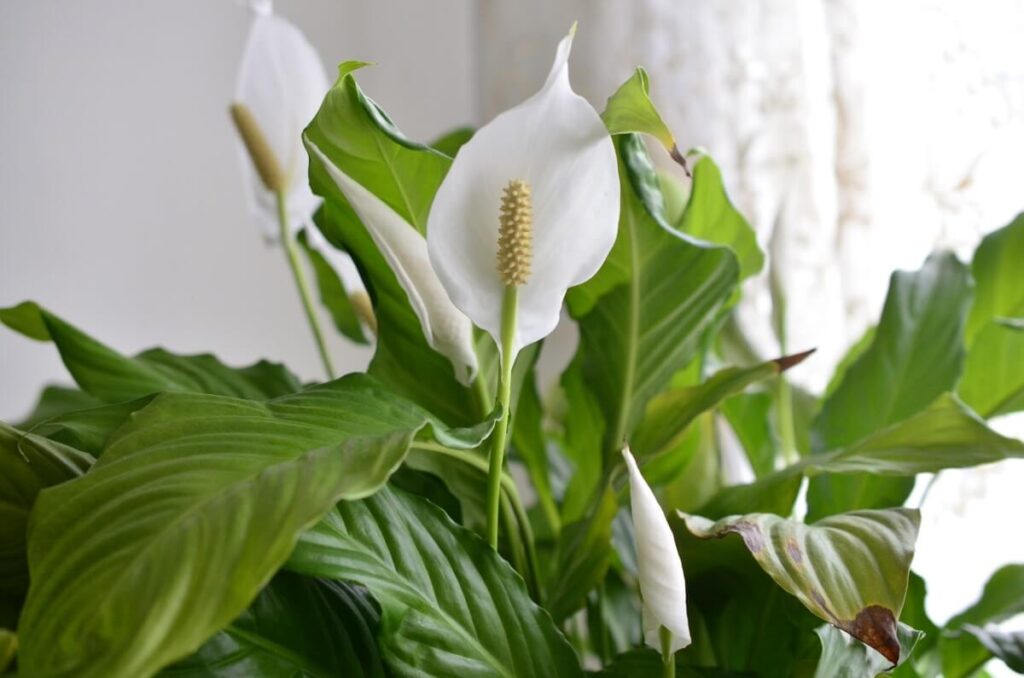
Peace Lily plants are part of the Spathiphyllum genus. This genus is in the Araceae family, making it distantly related to arrowheads and elephant ear plants.
This popular houseplant is kept all over the world, but it was originally native to parts of Central and South America. Some varieties also grow in tropical parts of Asia.
Peace Lily plants vary slightly between species, but most have dark green foliage that grows directly from the soil on individual stems for a bushy appearance.
These plants tend to range in size between one and five feet tall and have a similar maximum width. Bright white flowers with a unique leafy appearance appear on their own stems. Peace lilies are rich in symbolic meaning and also provide a host of additional benefits.
The plant needs relatively little light, making it a popular indoor houseplant for areas where other plants cannot survive. However, it needs a lot of water and prefers higher humidity than many homes typically provide.
Why propagate a peace lily plant?
Peace Lily plants require a little more work than some other houseplants to propagate. However, it is worth the effort if you want more plants (for free) to spread throughout the home rather than just a single specimen. Propagation is also the best way to divide your houseplants as well.
Important considerations when propagating a peace lily plant
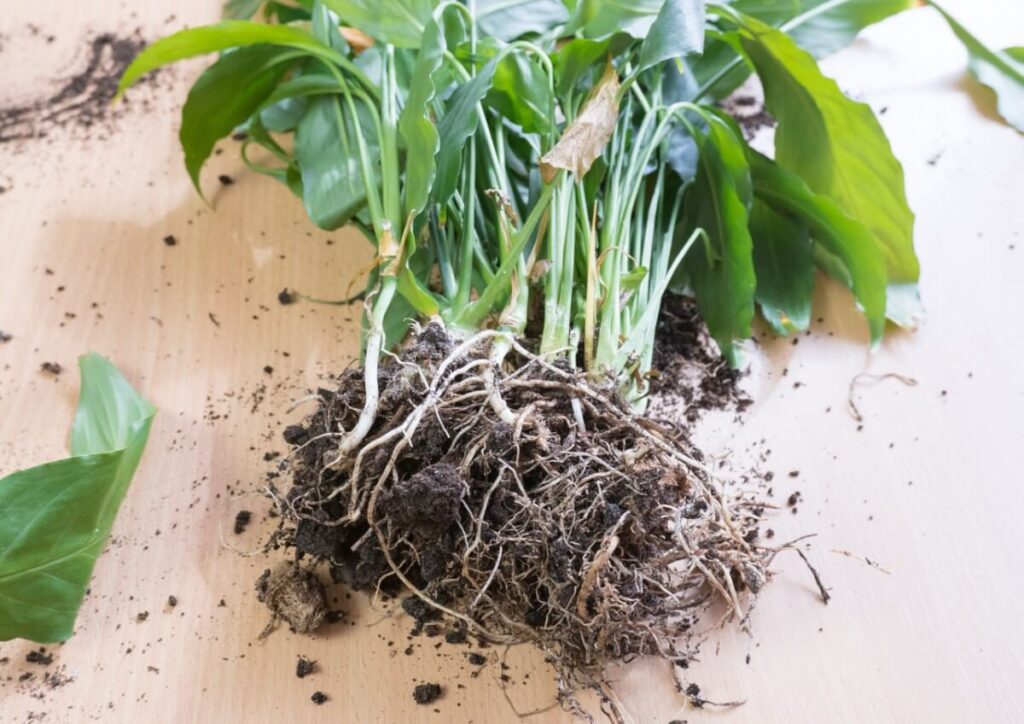
The peace lily is not difficult to propagate, but it generally responds to only two specific methods. Trying to propagate it as if it were a succulent or shrub will only result in a lack of results. To avoid frustration and wasted effort, make sure you use root division or water propagation to create new Peace Lily plants.
Level of difficulty
Peace Lily plants are easier to propagate than many other varieties of houseplants. This is mainly due to the foolproof nature of dividing a mature plant into new and smaller specimens.
There is no need for a long period of waiting for growth, as with succulents and leaf cuttings. However, you still need to handle the plant with care and may need some general gardening experience before attempting this process.
Can peace lilies grow in water and/or soil?
Many houseplants can be propagated in both soil and water or prefer only one method over the other. Peace Lily plants respond well to water propagation, but to a limited extent.
They do best when planted in fresh, well-draining lily potting soil after division so that the roots can recover and spread quickly. Putting a cutting in water, even if roots are attached to the stem, can result in a happy plant that only grows to a limited size. It is difficult to transfer this cutting to soil later, but it can stay in a vase indefinitely in a smaller size.
Can you propagate peace lily plants from just one leaf?
The Peace Lily plant cannot establish roots from leaf cuttings. This is a common method for house succulents, but it is rare among other plants such as the peace lily and its relatives.
Only cuttings containing large root segments and several plant stems with healthy leaves can root and grow into a new plant. Leaves broken off or even gently cut for propagation will never form roots, even with rooting hormone.
Peace Lily Growth Expectations
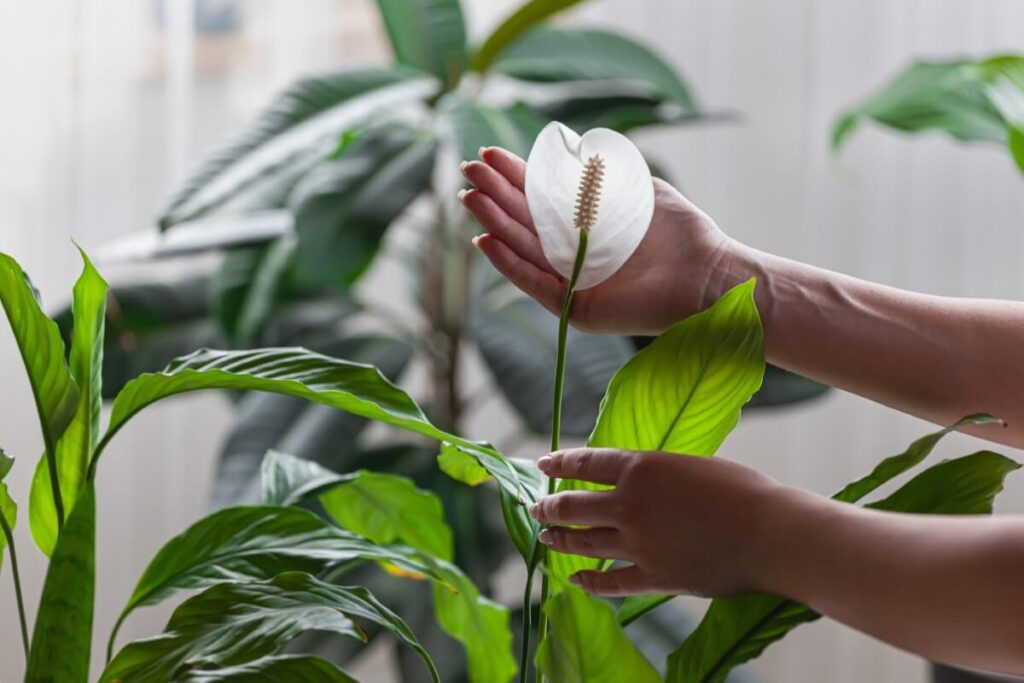
Some propagation methods are slower than others. Peace Lily plants establish relatively quickly as they are usually only propagated by division.
You should notice new growth on the new plants within one to three months after they are propagated. Within six months of the split, they should be filled in and given a more developed appearance.
It is good to fertilize the new peace lily plants about two to three months after they have been propagated to encourage vigorous growth without the risk of burning the roots while they recover.
If you start with very small pieces of Peace Lily, you may have to wait six months just to see new growth because it will take time for the roots to expand.
How to Propagate a Peace Lily Plant: Options and Techniques
The Peace Lily plant does not respond well to many popular propagation methods. You cannot take a cutting of the leaf or stem alone and put it in water, for example. The method that works well for this houseplant is the use of division. It’s a simple process that’s easy to learn, but it can be a little messy. It is also worth noting that Peace Lilies contain compounds called insoluble calcium oxalates which can irritate the skin so it is wise to wear gloves when handling the plant.
Step 1:
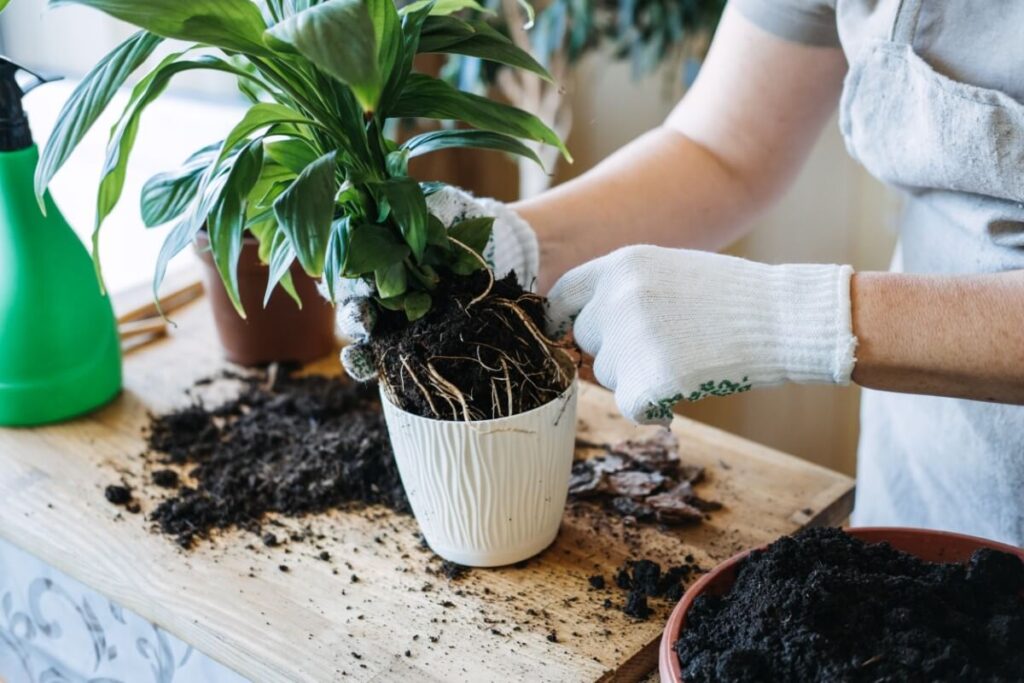
Take the plant outside or to a covered work area that you can easily clean up. The larger the mature peace lily, the better it responds to division.
Step 2:
Gently tip the plant on its side, roll or rock it to loosen the plant from the container it is in. You may need a flat spatula to slide between the root ball and the pot.
Step 3:
Once the soil is loose, gently lift out the plant around the base of its leaves and stems.
Step 4:
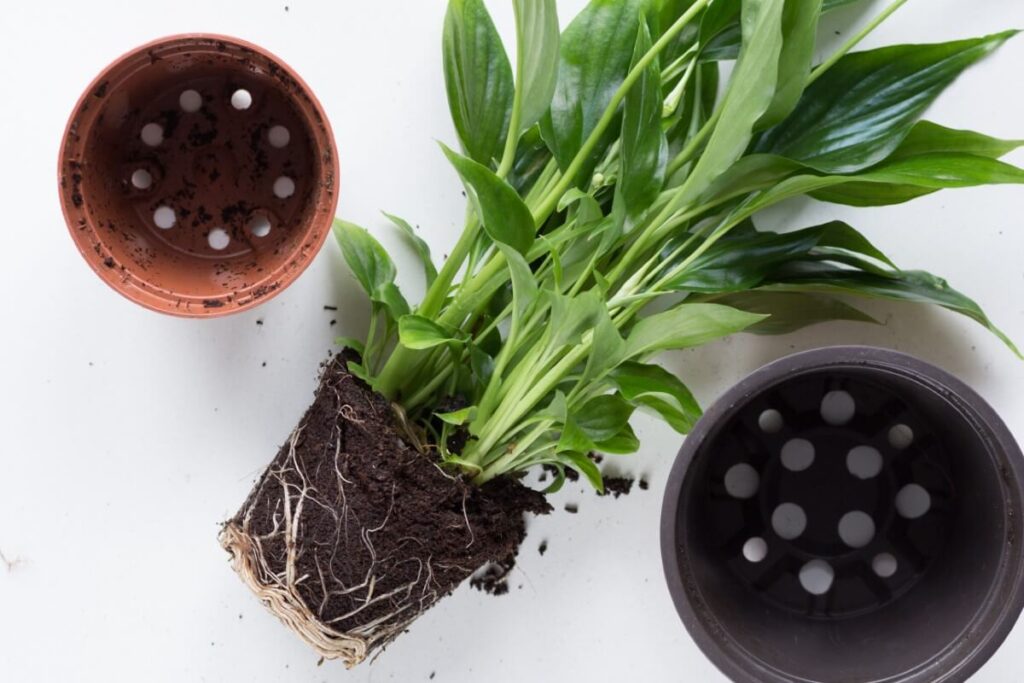
Place the plant on a covered bench or the ground. Use the flat hand spatula to carefully separate the root ball, leaves and stems into two or more sections. You can easily divide the largest Peace Lily plants into three or more divisions. Make sure there are at least a dozen leaves and stems per root ball.
Step 5:
Lift each division and place it in an appropriately sized pot only about 1 inch larger than the root ball. If you prefer to use water propagation, rinse off all the soil from the roots and place it in a vase of fresh water.
Step 6:
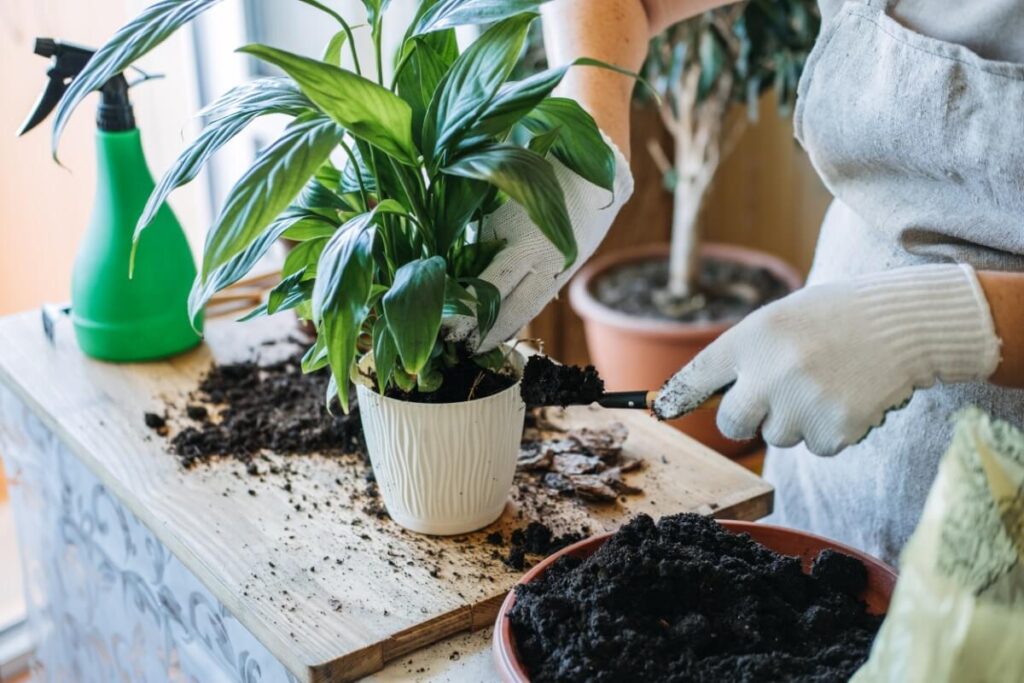
If using soil, fill the pot with a loose, well-draining potting mix rich in organic matter and peat moss. Pat the soil well and water the new plant well.
Step 7:
Give the plant about a week to recover before watering again as it takes some time for the new roots to form to absorb the water.
Peace Lily Care after Propagation and Tips for Propagation Success
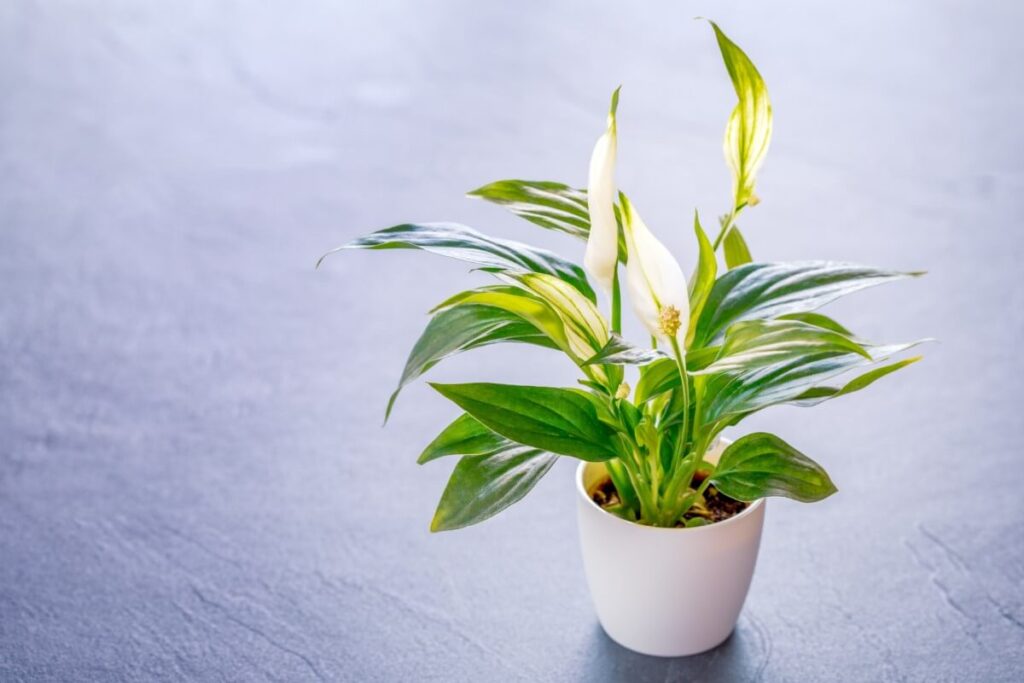
It is best to propagate this popular houseplant during its active growing season of summer and spring. Waiting until the dormant period in fall and winter will only reduce the chances of success.
Peace lily plants are best placed in locations that receive lots of bright, indirect sunlight throughout the day.
Peace Lily plants must be kept at temperatures above 55 degrees F, especially after the shock of division. Keep them below 85 degrees F as well. Keep the humidity high at least for the first few days after propagation.
Allow the newly propagated Peace Lily to dry out a bit between watering cycles right after the process. When growth resumes vigorously, return to the regular watering cycle.
The new plants do not need to be replanted or pruned until they push against the sides of the pot or container. This can take six months to a year or more after the plant is divided.
Watch for wilting, drooping, some yellowing of leaves and lack of growth after a few months, indicating that the peace lily is not happy. Change the water weekly if you use that method.
You also need to keep an eye out for any common peace lily pests and diseases.
For more, see our in-depth guide to peace lily care at home.
Common peace lily propagation problems, questions and solutions
How long does it take for a peace lily to root in water?
When a rooted cutting is placed in water, new roots should form within a few weeks.
Can a peace lily live in water forever?
The plant will stay alive, but it is unlikely to grow much larger and may not flower.
How long does it take for Peace Lily plants to reproduce?
In water, Peace Lily plants take only a few weeks to reproduce. Plants in soil can take a few months to fill out.
Are Peace Lily plants difficult to propagate?
Peace Lily plants are easy to propagate but require patience.
Can you grow a Peace Lily plant from a broken leaf?
This houseplant will not respond well to trying to grow from a single leaf.
Why isn’t my Peace Lily rooting?
Common problems include root damage, overwatering and improper soil mixing.
How to Propagate Peace Lily Plants – The Final Word
If you have a few minutes to spare and a great Peace Lily plant, you can use these simple propagation tricks to grow even more of them for absolutely no cost. Make some new Peace Lily plants from one by root division. Place the split material in water or soil to create plants that you can give away or keep. Enjoy!
If you’re looking for your next peace lily plant without propagating, see our guide to the best plant shops that supply peace lilies across the country.
 pyomn
pyomn



